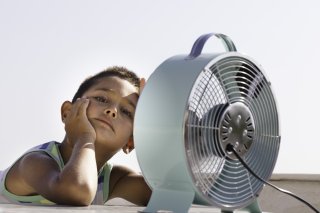Protecting Children's Health During and After Natural Disasters: Extreme Heat
Extreme Heat Effects on Children and Pregnant Women
Heat-related illnesses are common, yet preventable on hot days. Children and pregnant women need to take extra precautions to avoid overheating on days of extreme heat. Dehydration, heat stroke, and other heat illnesses may affect a child or pregnant woman more severely than the average adult.
On this page:
- Children Susceptibility to Extreme Heat
- Protect Children From Extreme Heat
- Extreme Heat and Pregnant People
- Dehydration in Children
- Children and Heat Strokes
- Know the Heat Risk for Your Area
- Additional Resources
Children Susceptibility to Extreme Heat

- Physical characteristics – Children have a smaller body mass to surface area ratio than adults, making them more vulnerable to heat-related morbidity and mortality. Children are more likely to become dehydrated than adults because they can lose more fluid quickly.
- Behaviors – Children play outside more than adults, and they may be at greater risk of heat stroke and exhaustion because they may lack the judgment to limit exertion during hot weather and to rehydrate themselves after long periods of time in the heat. There are also regular reports of infants dying when left in unattended vehicles, which suggests a low awareness of the dangers of heat events.
Protect Children From Extreme Heat
Start with prevention
- Keep children inside or out of direct sun;
- Move outdoor activities indoors or to the morning and evening instead of mid-day;
- Dress in loose, lightweight and light-colored clothing; and
- Practice sun safety including seeking shade, wearing sunscreen and protective clothing and avoiding burns.
Keep hydrated
Children are more likely to become dehydrated than adults because they can lose fluid more quickly. Make sure children are drinking plenty of fluids before, during and after periods of time in extreme heat.
Recognize heat illnesses
Signs of heat illness or heat exhaustion can include:
- Flushed skin,
- Dizziness,
- Headache, or fatigue; and
- Weakness or muscle cramps.
Many of these symptoms can be treated at home with fluids and rest. If these symptoms are ignored, heatstroke can develop.
Caring for infants during hot weather
- Check your baby’s diaper for concentrated urine, which can be a sign of dehydration.
- If your infant is sweating, he or she is too warm. Remove him or her from the sun immediately and find a place for the baby to cool down.
- Avoid using a fan on or near your baby; it dehydrates them faster.
- A hat traps an infant’s body heat and should only be worn in the sun to avoid sunburn.
- Never leave an infant in a parked car, even if the windows are open.
Extreme Heat and Pregnant People
An increase in the core body temperature of a pregnant woman may affect the fetus, especially during the first trimester.
During extreme heat pregnant people should:
- Wear light loose fitting clothing
- Stay hydrated by drinking six to eight glasses of water a day
- Avoid caffeine, salt, and alcohol
- Balance fluids by drinking beverages with sodium and other electrolytes
- Limit midday excursions when temperatures are at their highest
- Call doctor or go to emergency room if woman feels dizzy, short of breath, or lightheaded
Dehydration in Children
Signs of dehydration:
- Decreased physical activity
- Lack of tears when crying
- Dry mouth
- Irritability and fussiness
What to do if your child is dehydrated:
- Have the child or infant drink fluid replacement products
- Allow for rehydration to take a few hours, over which children should stay in a cool, shaded area and sip fluids periodically
- Call your doctor if symptoms do not improve or if they worsen
Children and Heat Strokes
Heat stroke, a condition in which the body becomes overheated in a relatively short span of time, can be life-threatening and requires immediate medical attention.
- Skin is flushed, red and dry
- Little or no sweating
- Deep breathing
- Dizziness, headache, and/or fatigue
- Less urine is produced, of a dark yellowish color
- Loss of consciousness
What to do if your child has suffered a heat stroke
- Immediately remove child from heat and place in a cool environment
- Place child in bath of cool water and massage skin to increase circulation (do not use water colder than 60F – may restrict blood vessels)
- Take child to hospital or doctor as soon as possible
Know the Heat Risk for Your Area
HeatRisk: Find real-time information about the heat index and level of caution needed based on your location. En español aqui.
AirNow: Get real-time air quality information based on zip code or city. En español aqui
Additional Resources
- Heat.gov
- Heat and Infants and Children (CDC)
- Heat Safety for Kids and Teens (National Weather Service)
- Extreme Heat Safety for Babies (Español: Cuidados en los Días de Calor Extremo para bebés) (PEHSUs)
- Extreme Heat Safety for Children (Español: Cuidados en los Días de Calor Extremo para niños) (PEHSUs)
- Extreme Heat Safety during pregnancy (Español: Cuidados en los Días de Calor Extremo durante el embarazo) (PEHSUs)
- Extreme Heat Safety for athletes (Español: Cuidados en los Días de Calor Extremo para atletas) (PEHSUs)
